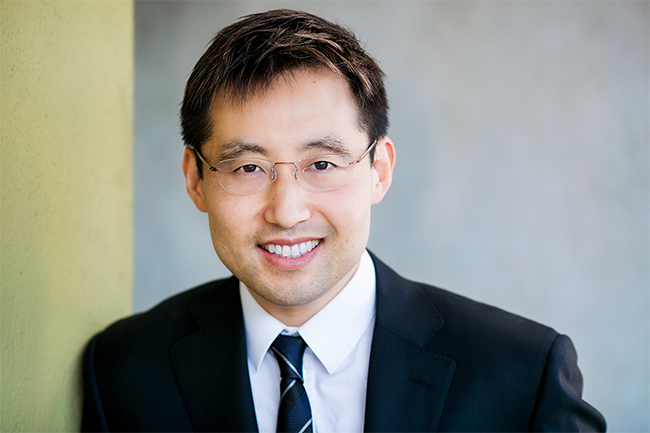In plastic surgery, the term “awake anesthesia” refers to a procedure performed with local anesthetic and light sedation. The method originated in South Korea, but Dr. Kenneth Kim — medical director of the plastic and reconstructive surgery practice at Dream Medical Group — refined it further at his Beverly Hills clinic using cutting-edge American equipment and materials.
In many cases, Awake Anesthesia is far preferable to general anesthesia. In addition to being safer and less invasive, it offers less pain, faster recovery times, and more aesthetically pleasing outcomes.

Awake surgery vs. general anesthesia
The goal of general anesthesia is to render the patient entirely asleep in a coma-like state during surgery. When patients are under general anesthesia, surgical teams must closely monitor their airways. Following the administration of general anesthesia, patients enter a state that goes beyond simple sleep, making adverse effects like shallow breathing suffocation possible. When complications such as these arise, they can deprive patients’ brains and organs of oxygen.
“The risk-to-benefit ratio of deep, anesthesia-induced sleep is not advisable during many procedures,” explains Dr. Kim. “In certain cases, general anesthesia actually poses more dangers than the surgery itself.”
Unlike general anesthesia, awake anesthesia renders patients relaxed, responsive and aware of their surroundings during procedures. This allows them to remain fully in control of their breathing, and follow their doctors’ instructions.
Still, the thought of staying awake during a surgical procedure can seem intimidating to many unfamiliar with the process. Dr. Kim assures patients that even though they will remain completely responsive while awake, they will feel calm and relaxed throughout the entire operation.
“You feel absolutely no pain during the surgery because we numb the region being operated on with a local anesthetic,” he says, “which will continue to dull the pain even after the procedure is over. In fact, most of our patients only need mild pain relievers during their recovery period following these procedures.”
The benefits of awake anesthesia
As Dr. Kim explains, the process of undergoing awake anesthesia during procedures such as plastic surgery holds many benefits for patients. The first — and perhaps best — is that conscious patients do not require breathing tubes.
Additionally, while patients are conscious after being administered the local anesthetic, they are able to follow their surgeon’s directions. According to Dr. Kim, this allows the surgeon to see the dynamics of the muscle muscle movement for the most optimal and natural results. .
Furthermore, patients tend to report less overall pain and undesirable side effects after procedures when the local anesthetic is used, compared to those who are administered general anesthesia. “Dizziness, nausea, and constipation are all potential common after-effects of general anesthesia,” Dr. Kim says.
Plastic surgery available through awake anesthesia
Dr. Kim has used his method of applying awake anesthesia across a wide range of patients and medical procedures, including upper face and brow lifts, tummy tucks, rhinoplasties, facelifts, breast augmentation, blepharoplasties, and more.
Along with these surgeries, Dr. Kim’s blepharoplasty using awake anesthesia has been lauded by his peers for its surgical precision. This procedure — also called an eyelid lift — gently corrects sagging eyelids. During the surgery, Dr. Kim removes drooping skin around the eyes, then lifts and tightens the skin that remains. As he performs the procedure on his conscious patients, he has even more control over the final result because he can ask those patients to open and close their eyes as he works in order to achieve the desired results.
While complications following breast surgery are extremely uncommon, Dr. Kim’s breast augmentation using awake anesthesia makes the procedure even safer. Compared to standard breast augmentation, the amount of blood lost in the days following Dr. Kim’s approach is significantly less, since identifying and controlling excess bleeding is much easier when patients are not under the effects of general anesthesia. “Awake anesthesia enables surgeons to keep blood loss to a minimum during and after surgery, and perform procedures with far less damage to tissues,” he explains. ((((WE NEED TO TALK ABOUT WHAT HAPPENS TO BLOOD PRESSURE WHEN PATIENT IS UNDER GENERAL ANESTHESIA AND WHAT HAPPENS AFTER THEY WAKE UP AND HOW IT LEADS TO CAPSULAR CONTRACTURE–OVER THE PHONE)))
Similarly, Dr. Kim’s facelifts using awake anesthesia restore the youthful appearance of patients’ faces by eliminating excess fat and sagging skin. “Our awake facelifts result in less pain and scarring,” he says. “Less pain means speedier recuperations, and less scarring means better outcomes.”
Many patients go into tummy tucks worried about lengthy recoveries, but this is not an issue with an awake abdominoplasty from Dr. Kim. Recovery periods from his tummy tucks that use awake anesthesia generally require a fraction of the time of traditional procedures. (((ALSO NEED TO TALK ABOUT WHY TUMMY TUCK SHOULD BE DONE AWAKE TO PREVENT BLOOD CLOTS!–OVER THE PHONE)))
At one time, opting out of general anesthesia for cosmetic surgery was unheard of, but that is changing as patients see the obvious benefits. Today, patients in Los Angeles and beyond seek out the innovative cosmetic services offered by Dream Medical Group Plastic and Reconstructive Surgery.
For more information on medical procedures with awake anesthesia, interested parties can get in touch with board-certified reconstructive surgeon Dr. Kenneth Kim and his expert staff.
